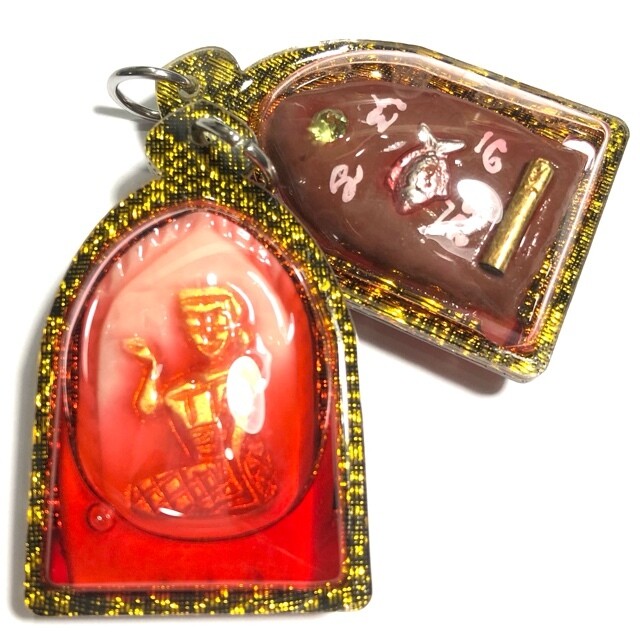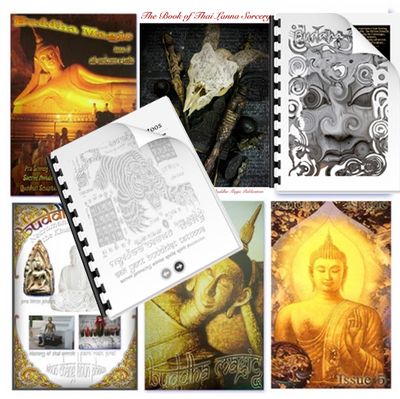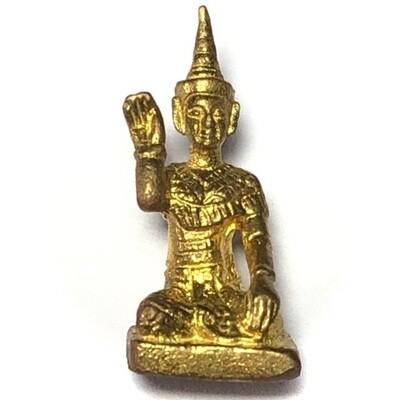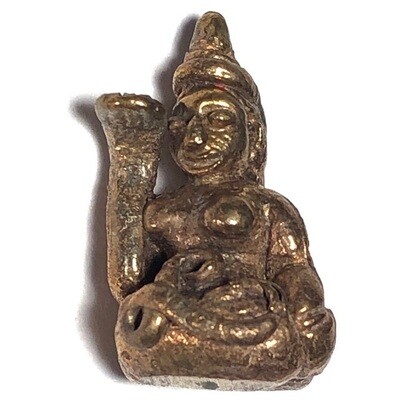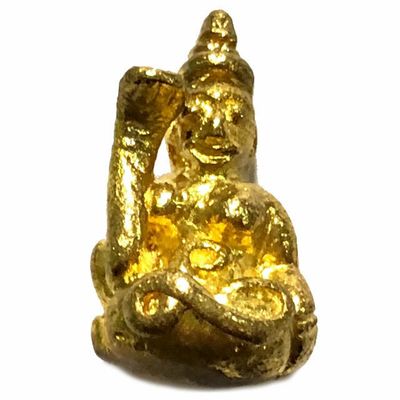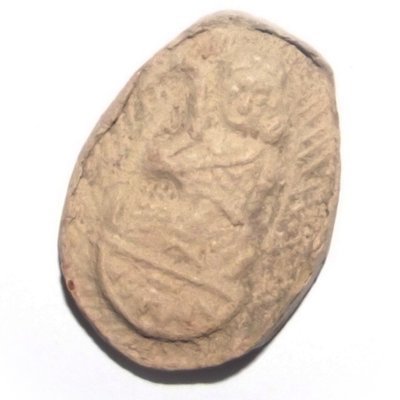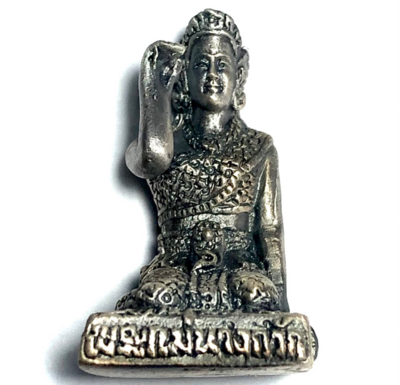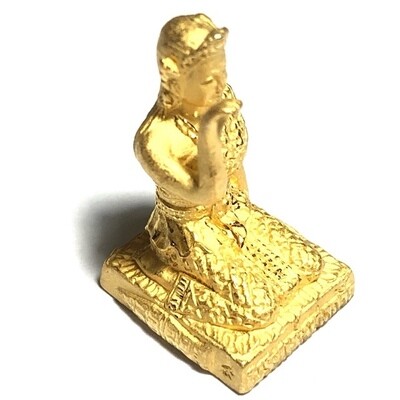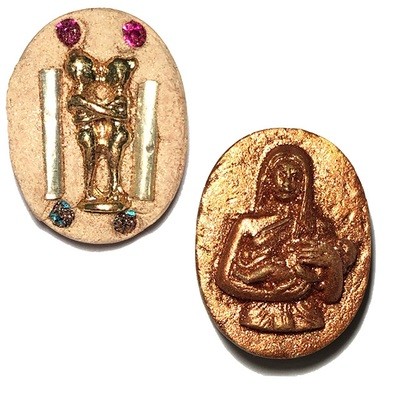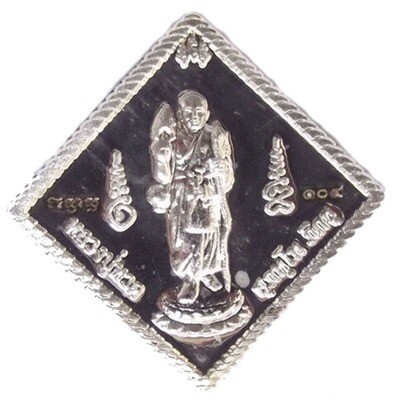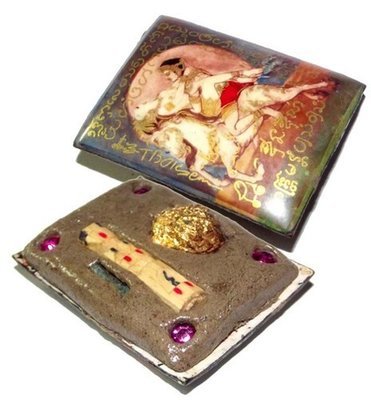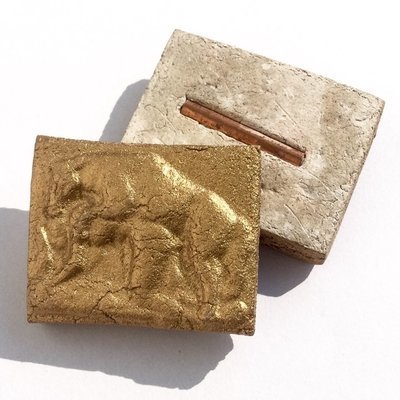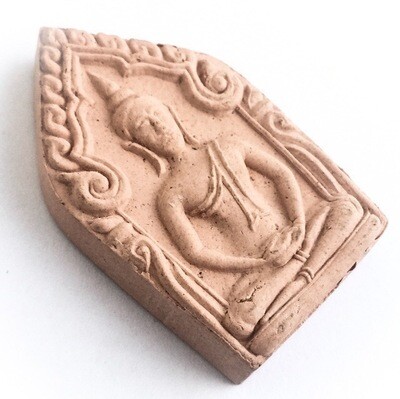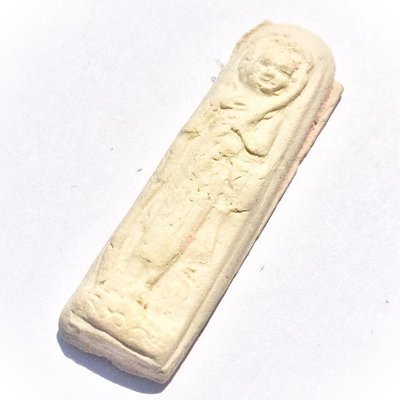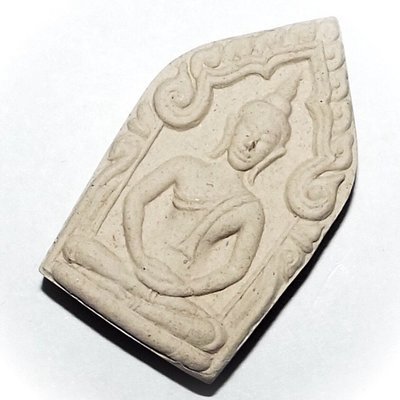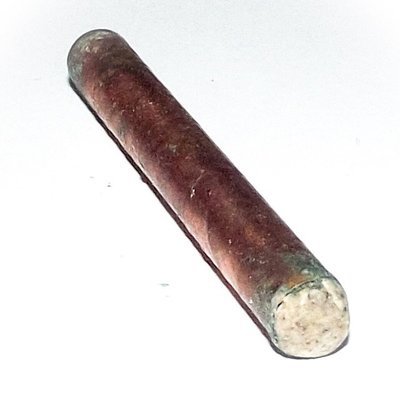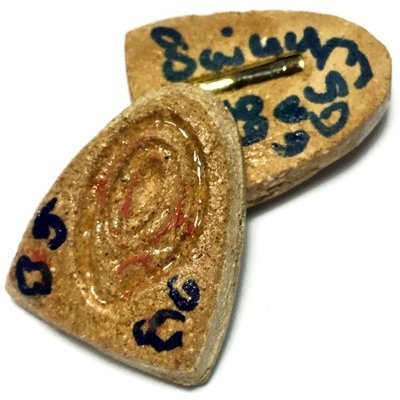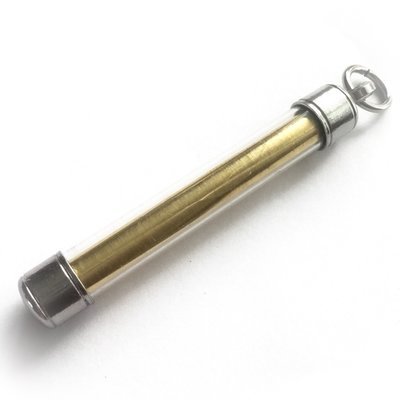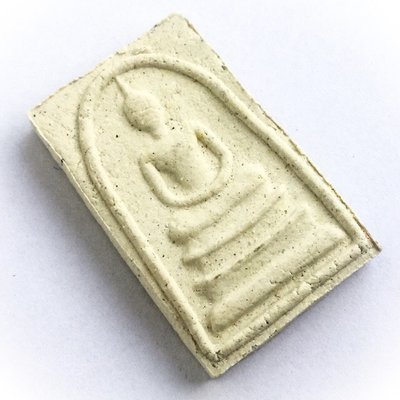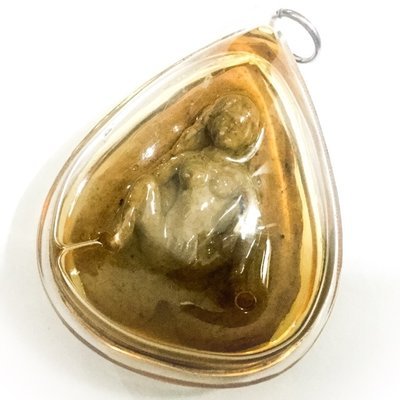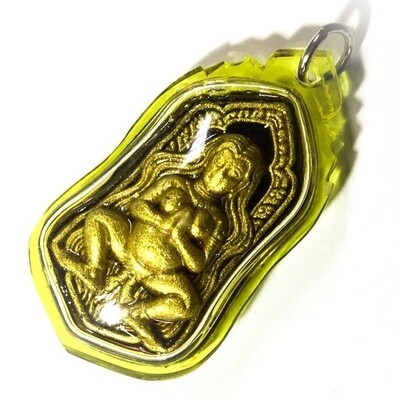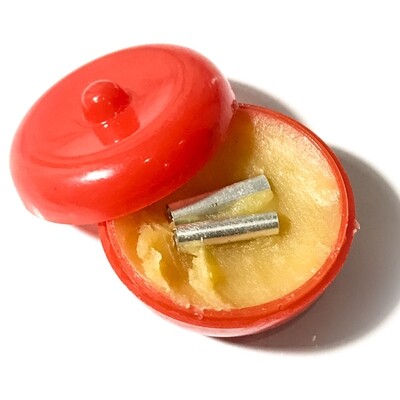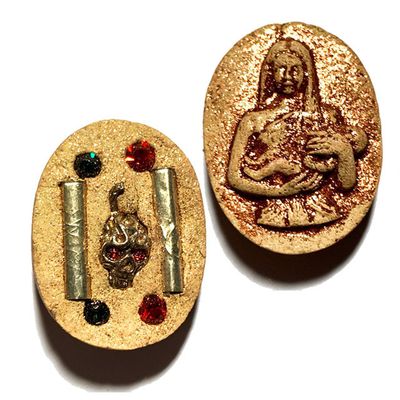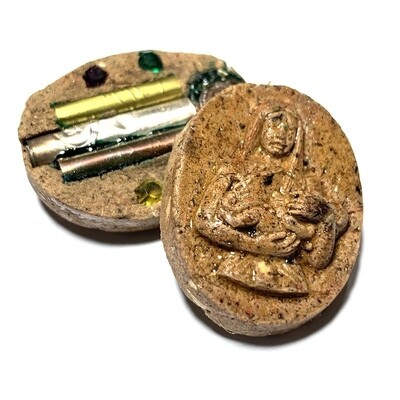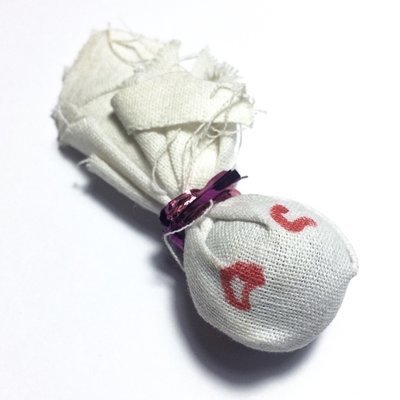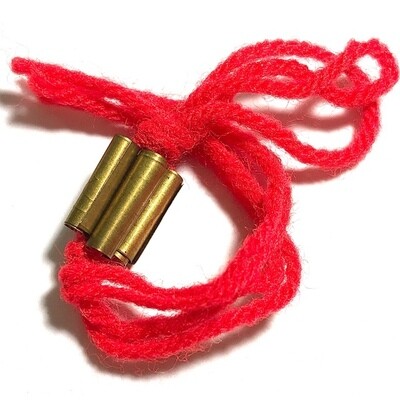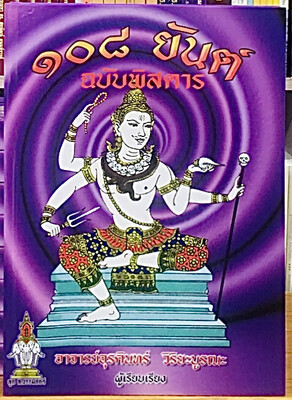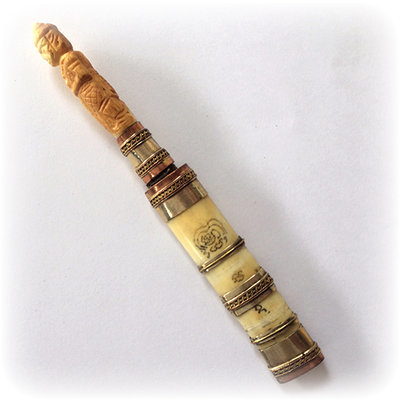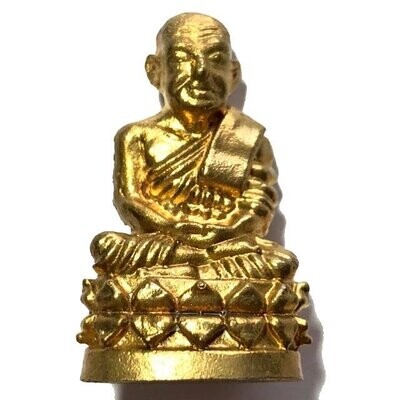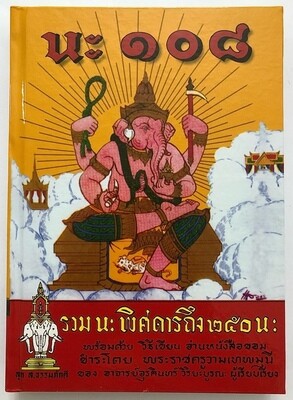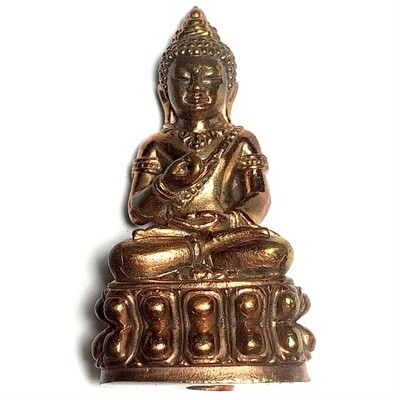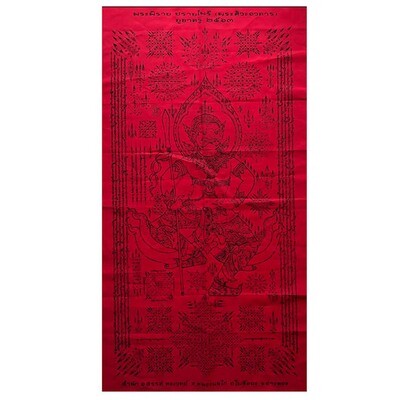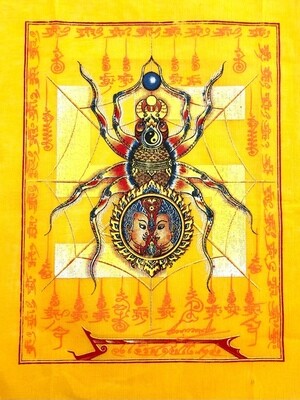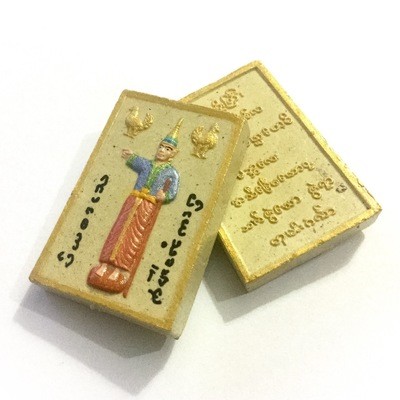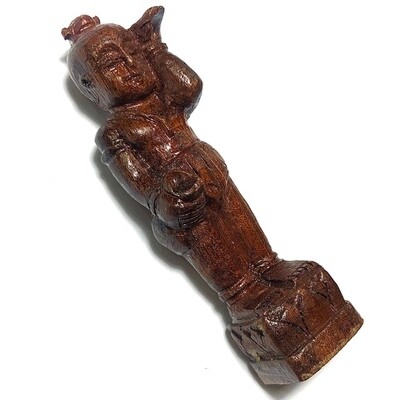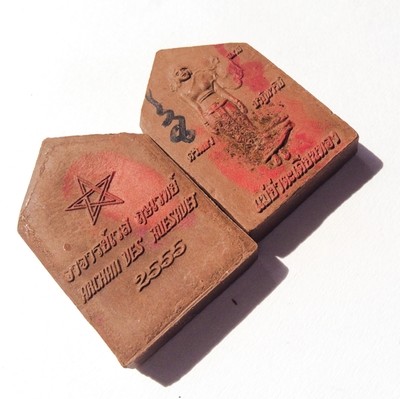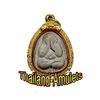

Thailand Amulets
Thai Buddhist and Magical amulets for Wealth, Health, Love and Happiness.
Vast Selection of Amulets
We have a vast selection of over 4000 different kinds of Sacred Amulets and Bucha Items, including Buddha Image, Loi Ongk statuettes, Buddhist Monk Coin Amulets, Takrut Charms, Nam Man Prai Oils, Mai Kroo Wands, Mitmor Ritual Knife, Lek Lai Kaya Siddhi Elemental Substance, Kumarn Tong, Gambling Amulets, Mae Nang Prai, Muan Sarn Sacred Powder Amulets, Palad Khik, Animist Charms, Necromantic Amulets, Buddhist, Animist, Brahman and Necromantic Amulets.
Nang Kwak Liam Nam Man Prai Wicha Jinda Manee Montr Carved Ivory in Prai Oil Tapian Fish, Ploi Sek Gem, & Takrut - Ta Poon Forest Lay Sorceror
This Pim Yai (Large Size) Ongk Kroo model exhibit of Pra Nang Kwak (Beckoning Merchant's Daughter Deity) hand carved amulet, was carved from Ivory/Elephant Bone (depending on availability of substance), which was legally donated to the hermetic solitary forest Lay-Master Ta Poon, for making sacred Amulets, and is immersed in a red Nam Man Wan Gai Daeng Red Cockerel herbal Prai Oil Potion mixed with nam Man Nga Khaw, considered one of the Holiest sacred Oils to use for Buddhist Metta Mahaniyom Mercy Charm Amulets. The rear face is stuffed full of Prai Maha Sanaeh Muan Sarn Sacred Powders, with one Takrut, a Ploi Sek Maha Pokasap Enchanted Gemstone, and one Pla Tapian Lucky Barbfish inserted, with Khom Agkhara spell inscriptions. Release in limited numbers in the year 2557 BE.
Nang Kwak is an extremely Ancient Deity worshipped since the time when the Lord Buddha was walking the Earth, and is derived from a story of the daughter of a Brahman Market merchant who traveled to markets to sell his wares on an oxcart, and who was blessed with great wealth and success due to the merits of his beautiful and charming daughter, lady Supawadee.
There is also the Thai Occult Legend which gives a different account of the origins of Lady Nang Kwak, which goes like this;
Nang Kwak is the daughter of 'Phu Jao Khao Khiaw' (meaning 'Grandfather Lord of the Green Mountain - Khao Khiaw could also mean 'Green Horns'). Phu Jao Khao Khiaw was a Lord of the Jadtu Mahaa Raachiga realm (one of the lower levels of Heaven - an Asura realm of giants and monster beings). His other name is 'Pra Panasabodee', and he is the Lord of the forest and places where wild plants grow. In that time, there was an Asura demon called Taw Gog Khanag (otherwise known as 'Taw Anurach'). Taw Gog Khanag was a good friend of Phu Jao Khao Khiaw, who had been attacked by 'Pra Ram' (the name of Rama in the Thai Ramakian - adapted from the Indian Ramayana Epic), who had thrown a Gog tree at him which pierced his chest and carried him through space to be pinned to the side of 'Pra Sumen' (Mount Meru). In addition, Pra Ram cursed him with the following magic spell; 'Until your descendants weave a Civara monks robe from lotus petals, and offer it to Pra Sri Ariya Maedtrai (Maitreya - the future Buddha), your curse will not be lifted'.
After this, Nang Prajant, the daughter of Lord Gog Khanag (Taw Anurach) had to serve her father, spending the days and nights trying to weave a Civara robe from lotus petals, in order to have it ready for offering to Pra Sri Ariya Maedtrai, who will descend to become enlightened in a future age from now. Because Lord Gog Khanag had to remain cursed and pinned to Pra Sumen, his daughter was in a pretty dire state without her father to help run things. Because she had to spend all her time weaving the Civara, she had no time to go sell things or make money, nor time to run a shop. When Jao Khao Khiaw heard the news of this, he felt compassion, and sent his daughter Nang Kwak to go stay with her as a companion. Because of the 'Bunyarit' (power of her great merit), Nang Kwak caused merchants and rich nobles from around the area to flock to Nang Prajants home and bestow gifts of gold, silver and money on them. Nang Prajant became wealthy and led a comfortable life.
This Nang Kwak is especially empowered with the Wicha Jinda Manee Montr, renowned for Maha Sanaeh, Maha Lap, Siang Choke, Kaa Khaay, Kong Grapan Chadtri and Klaew Klaad.
Kata Maha Jinda Manee Montra
Nang Kwak statues are a very sacred and ancient tradition of Deva worship which Thai Buddhists adopted from Brahmins as they immigrated and came to stay in Siam, long before Buddhism had got a foothold. Due to this, Kroo Ba Ajarn of Ancient Times created 'Kreuang Rang' (magical effigies) in the likeness of a lady with a shoulder mantle, sitting and beckoning with her waving right hand, inviting you to come and buy her wares. The statues were dressed in the traditional costume, and the Masters would make offerings and chant in meditation, until the statues hand began to wave back and forth, which was the signal that the ritual was successful and complete. Nang Kwak is seen to be prayed to (Bucha), as an altar statue, and also as an amulet, and Pha Yant (Yantra Cloth).
Nang Supawadee was on two occasions blessed with the opportunity to lusten to the Dhamma from the Arahant
Kata Chanting and Bucha method for Nang Kwak Deity
Nang Kwak is one of Thailands most commonly seen Deities. Her image is given offerings and prayed to, in order to increase wealth and business prosperity. She is a Deity revered by Merchants in both India and Thailand, by both Brahman, and Buddhists alike.
Nang Kwak is the helper of all shop-owners and merchants. She is normally seen placed on a high shelf (normally a wooden or red and gold lintel, called ‘Hing’ in Thai) and offered “Nam Daeng” (a red syrupy drink, often used in Bucha offerings to Deities in Thai Buddhist practice). Also, Incense, and flower garlands are offered to please Nang Kwak, and bring customers and make sales.
rear face of the amulet has a Takrut spell visible with the heart mantras of the Wicha JInda Manee Montr , for Immensely high Metta Mahaniyom and Maha Lap Empowerment of the nang Kwak and Prai Oils
Kata Nang Kwak is used when paying devotional merits to Nang Kwak, who is used in the place of business to increase the amount of customers and sales you may ingress. Nang Kwak is a very popular magic cloth Yantra used in most business establishments in Thailand. You can also see Nang Kwak worshiped as a statue . Traveling salespersons may use Nang Kwak portable amulets to be able to make Bucha whilst on the road, and ensure success in their salesmanship. Once they had already become pretty wealthy,
How to Rever Nang Kwak
To Bucha Nang Kwak, One should use 5 incense sticks and offer flowers (preferably jasmine), any kind of red colored non alcoholic drink (‘Nam Daeng’). Some water, and also some sweets and rice as offerings.
Light the incense, candles, and offer the flowers and drinks. Then Say
“Namo Dtassa Pakawadto Arahadto Sammaa Samputtassa” 3 times,
Each time you say the above line, you should be kneeling, and should bow after each time to the Buddha before you begin chanting Kata Nang Kwak.
Om Sriwichay Gangwian
Phu Jao Khao Khiaw Mii Luuk Kon Diaw Cheu Naang Gwak
Chaay Hen Chaay Rak Hying Hen Hying Tak
Tak Tuan Naa Puak Paanichaa Paa Guu Bpai Kaa Terng Mueang Maen
Guu Ja Bpai Kaa Hua Whaen Gor Dai Wan La Saen Tanaan
Guu Ja Kaa Saarapadgarn Gor Dai Doey Klong
Guu Ja Kaa Tong Mua Rai, Gor Dai Dtem Haab Piang Wan Nii Bpen Rooy
Saam Haab Ma Ruean Saam Duean Bpen Saedtii Saam Bpii Bpen Por Kaa Sampao
Pra Rasii Puu Bpen Jao Bprasit Hai Gae Luuk Kon Diaw Swaaha.
Read the full story of Nang Kwak
Because of the Wicha Jinda Manee Montr Empowerments, you can also increase and embellish the magical power and strength of this amulet by chanting the Jinda Manee Mantra, or even listening to it and meditating.
Manee Jindaa Sahassa Godti Tewaanang Amanussa Tewaanang Sammayajidtang mahaa Sammayajidtang Sappajidtang Ehi Aakajchandti Baritewandti
Manee Jindaa Biyang Bpanjatanang Yasang Taasaa Taasee Gomang Bpasandti Tiswaana Maadtaa Buddtang Wa Orasaa Sappechanaa Pahoo Chanaa Mahaa Manee Jindaa Ehi Puttang Bpiyo Tewamanussaanang Mahaa Jindaa Ehitammang Biyo Prahmanamudtamo Mahaa Manee Jindaa Ehisangkang Bpiyo Naakasubannaanang Bpinintriyang Namaa Mihang Putto So Pakawaa Tammo So Pakawaa Sangko So Pakawaa Intasinehaa Prahmma Sinehaa Isarasinehaa Raachaa Tewee Mandtree Ragkhang Jidtang Maranang Jidtang Mama
The Wicha Jindamanee has many applications, not just for pokasap and riches, but also to conquer enemies. Some Ajarns call the Wicha Jindamanee by other names, such as ‘Wicha Sangkh Plaeng Roop’ and ‘Wicha Sangkh Son Roop’ (wicha of the conch disguising its shape) – the conch is the horn of plenty of course and thus endless belongings, food and money flow in abundance. The abundance of necessities and easy living comes from this Wicha which will lighten suffering and allow he who enjoys this blessing to relax and not feel the pressures of surviving anymore, resulting in better moods, happiness and abundant pleasures.
About Ta Poon
Ta Poon is a reclusive Lay Master who has retreated to the forest and uses this name as an assumed name to avoid attention. He was blessed with being the apprentice of Luang Phu Suang, learning Wicha from him and a number of associated Adept Sorcerors, of both Ordained and Laymaster lineages. He recieved Wicha from a total of 295 different Adept Mages, Sorcerors, and Necromancers. The majority of his training however, came through the lower Northern Region of Thailand through the Luang Por Derm (Wat Nong Po) Lineage, and the Magical Master Lineage of Luang Por Tob of Wat Chon Daen.
When asked about the origins of his Manyfold, and Powerful Wicha, Ta Poon recounts of the time he was ordained as a Samanera, ordained by the Great and Mysterious Luang Phu Suang Tewada Len Din himself, and that he remained practiciing under the tutelage of Luang Phu Suang for a period of 15 years.
As Ta Poon was serving 9 years in the Army, as a Commander of a regiment in the three troubles Southern Islamic Provinces of Thailands border area, he was famous for his daring acts of running straight in through the hail of bullets coming at his regiment from the terrorist rebels, and would reach the terrorists without being harmed and take his pistol and shoot the terrorists in the head at point blank range. This was because of his use of Kong Grapan Chadtri and Klaew Klaad Spells which he had mastered.
As far as Wicha Metta Mahaniyom and Maha Sanaeh are concerned, Ta Poon had wives in every province through which he had traveled, or ever settled, and it is said that despite his old age, that, his last wife which he took was only 27 years old. This was as he was already at the ripe old age of 84 years old.
These days are however, over. He now lives secretly under an assumed nickname (Ta Poon) in the deep forest in the north eastern region near the border land areas of Thailand between Cambodia and Laos. Very few people know of his whereabouts, but those people still travel into the deep forest to find him and beseech him for his famously powerful magical Sorcery Spells and blessings. He still performs Holy Water Blessiings, Exorcisms, and creates special Takrut Spells and empowers an array of amulets for those who are able to find him, and are able to find his favor.
His Takrut empowered with Maha Ud Kong Grapan Chadtri Klaew Klaad, are normally requested by soldiers, and high-ranking police officers, who have been his devotees from the time when he was still a high-ranking officer in the army, fighting against the rebels in southern Thailand, and amazed them with his daring feats, under the protection of his special Adept Wicha.
Ta Poon does not allow his picture to be taken, and forbids it to any of the devotees who find the way to his whereabouts, to reveal his location to anybody in the outside world. He says, he is already bored of all of the confusion and greed in the world outside the forest.
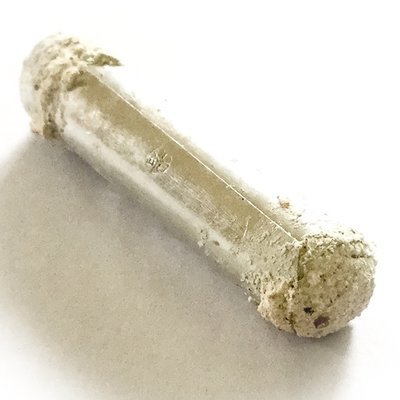
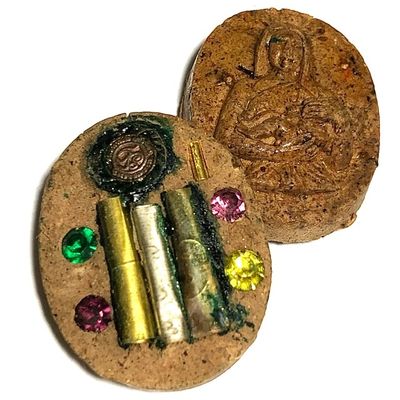

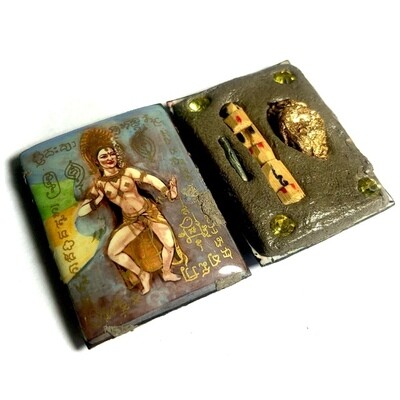
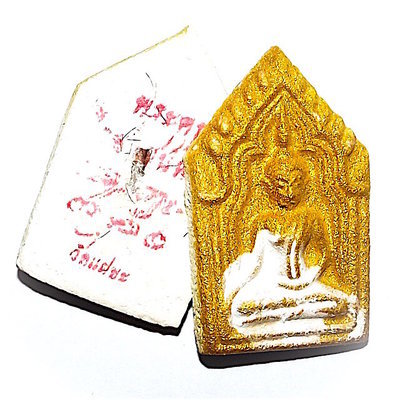
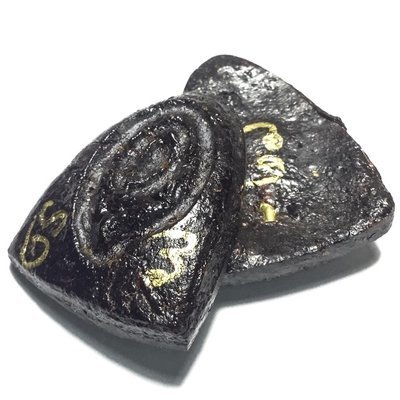
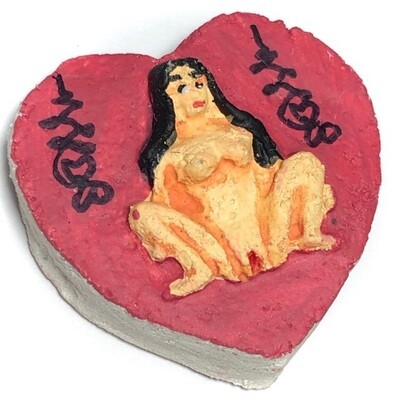
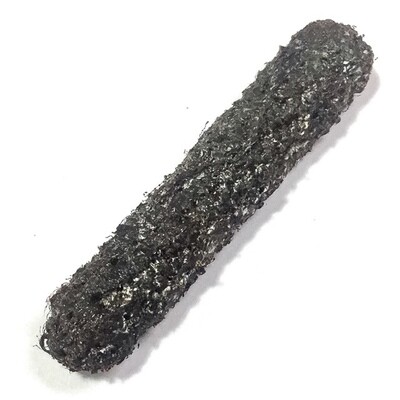
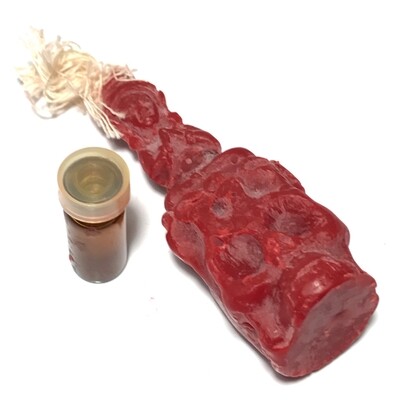
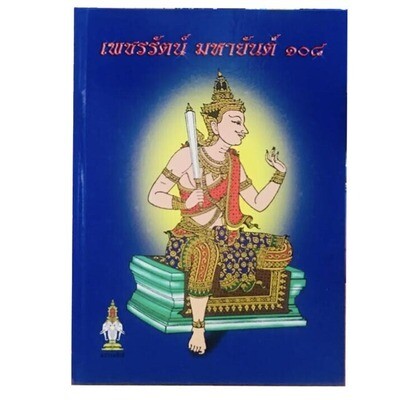
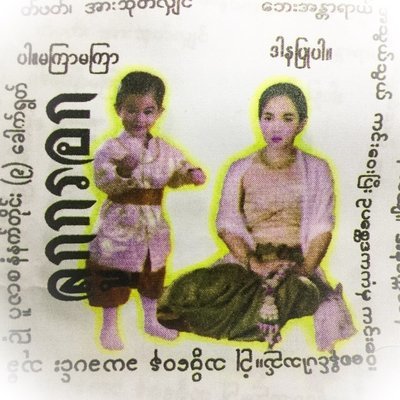
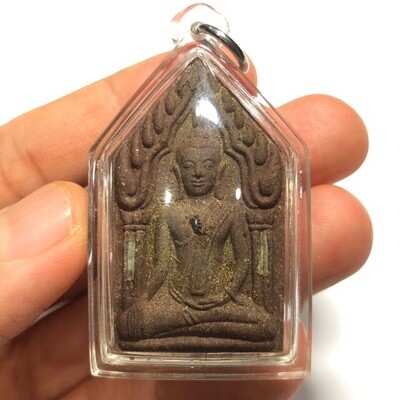

Contact Us
Follow Us on Youtube
About Us
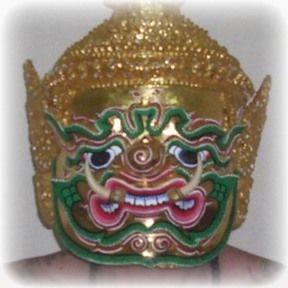
Ajarn Spencer
Proprietor
Thailand Amulets is owned and Administrated by Thai Occult and Amulet expert, Ajarn Spencer Littlewood who guarantees only authentic blessed amulets, and a free gift with every order, as well as his safe delivery or money back guarantee. https://facebook.com/ajarnspencer
